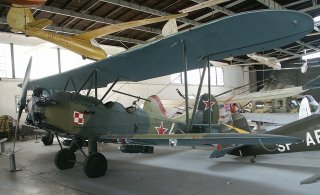North Korea Once Had Wooden Airplanes and a Foolish Plan
The Polikarpov Po-2, or U-2, was a two-seat wood-and-fabric biplane developed in the late 1920s for use as a primary flight trainer
In another unusual engagement, Lt. Joseph Corvi and Sgt. Dan George tracked a Po-2 biplane over Sinanju on December 12, 1952. Unable to spot the tiny biplane far ahead, Corvi aimed a burst of his cannons purely based on the radar contact, and scored the first beyond-visual-range kill in air-combat history.
The MiGs Strike Back
U.S. jets weren’t the only ones making night interceptions. American B-29 strategic bombers had been forced to fly by night because of their excessive vulnerability to MiG-15s. As Soviet La-11 night fighters lacked the speed and climb rate to intercept them, the VVS deployed MiG-15s to attempt intercepts at night under the direction of ground controllers.
This strategy finally paid of in June 1952, when three B-29s were shot down and several more damaged by MiGs of the Sixty-Fourth Fighter Corps. Soviet Maj. Anatoly Karelin would eventually claim no fewer than six B-29s shot down at night over the course of the war.
The Air Force cancelled its B-29 raids for two months. When they started up again, the B-29s were escorted on alternating nights by Starfires and Skyknights. These proved effective in a largely deterrent capacity: the American fighters would detect approaching MiGs with their radars and attempt to intercept them, but then the Soviet pilots would turn away, warned by their ground controllers. According to the squadron history of the 319th, not a single B-29 under their protection was lost in action.
However, the hunter would become the hunted, as Soviet pilots began attempting to bushwack the escorting night fighters. One MiG-15 would be sent ahead to lure the American night fighters to focus on an intercept—leaving it vulnerable to ambush by three other MiGs approaching from behind.
Navy flyer Gerard O’Rourke of VC-4 would describe one such ambush as a contest between “blindfolded wrestlers” in his book Night Fighters Over Korea. His rear-mounted radar would detect an approaching jet, and he would dodge out of its path and pick up new contacts on his search radar, only for another Soviet fighter to end up on is tail.
O’Rourke was able to play touch-and-go until the MiG headed for home short on fuel. Fellow pilot Lt. Bob Bick was less fortunate, and last heard reporting to have “taken several 37s [shells]” and never heard from again. Chinese MiG pilot Hou Shujun claimed a night fighter over Anju, which correspond to records of an F3D-2 of James Harrell that disappeared in the area that evening.
By the time of the armistice in July 1953, neither side had achieved a definitive control of the night skies. The poky Po-2s and Yak-18s remained a tricky target for the American jet fighters, while the MiG-15s had difficulty breaking through the night fighters escorting American B-29s.
In a 1998 article in Military History, Michael O’Connor would estimate that only thirteen Washing Machine Charlies were shot down by U.S. aircraft, not counting MiGs. Considering the constant nuisance and occasional havoc they wrought, as well as the considerable high-tech resources invested in hunting them down, the night intruders achieved useful results at a limited cost.
The F-94 would end the war with four kills, and F3D Skyknight with six (including four MiGs), making the latter the top-scoring Navy fighter type of the Korean War. Soviet pilots claimed to have shot down eleven F-94s; however, U.S. records confirm the loss of only one F-94 and F3D each to MiG-15s. However, dozens of each aircraft type were lost in accidents or to unknown causes.
While the Starfire would be retired in the mid-1950s, the Skyknight would remain in service through 1970. It was used to test the Navy’s first radar-guided air-to-air missile, the AIM-7 Sparrow, and later fitted with radar jammers in its nose. Marines would fly this version, the EF-10, out of Da Nang during the Vietnam War and use their gear to disrupt the guidance systems of North Vietnamese SA-2 surface-to-air missiles.
Six decades after the Korean War, the KPAF still apparently operates a few low-altitude attack units equipped with Yak-18s. In 2014, Kim Jong-un was videotaped visiting a female-crewed unit at Kangdong airfield for International Women’s Day and playing with one of their Yak-18 training simulators.
Sébastien Roblin holds a master’s degree in conflict resolution from Georgetown University and served as a university instructor for the Peace Corps in China. He has also worked in education, editing and refugee resettlement in France and the United States. He currently writes on security and military history for War Is Boring. This article was first published in 2019.
Image: Wikimedia Commons

